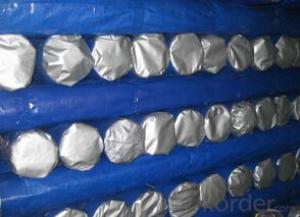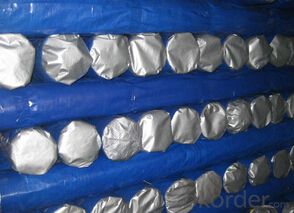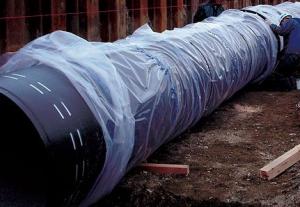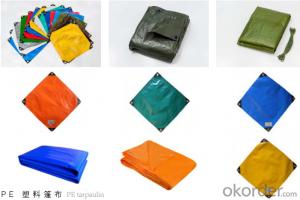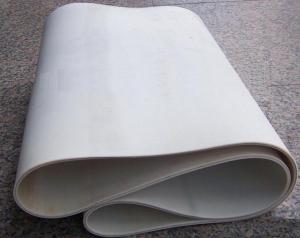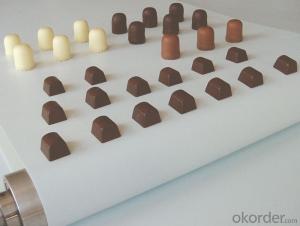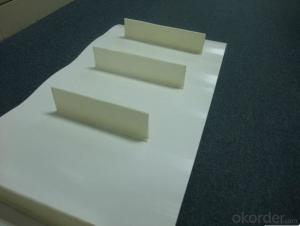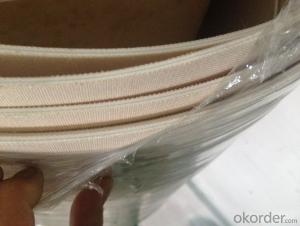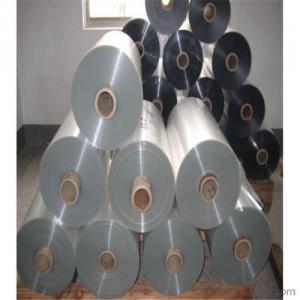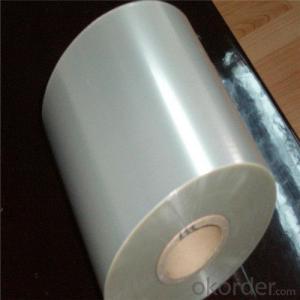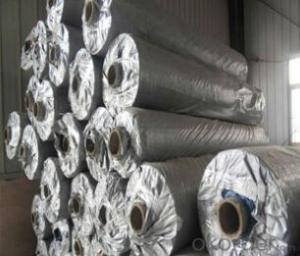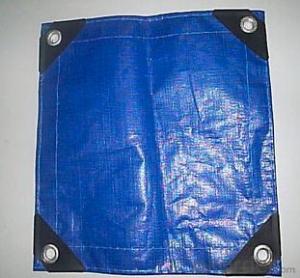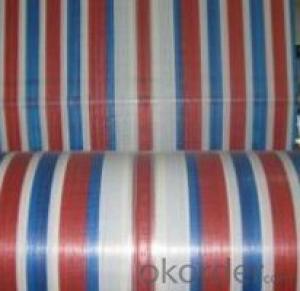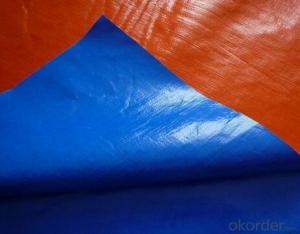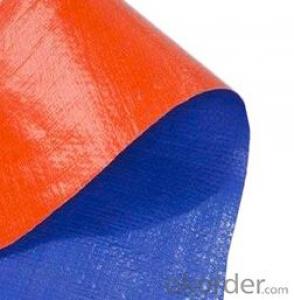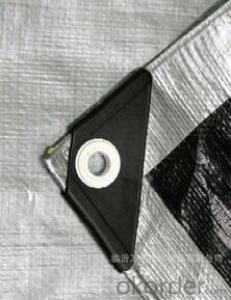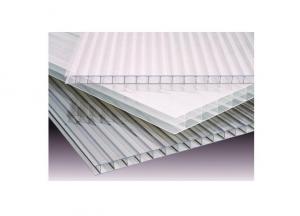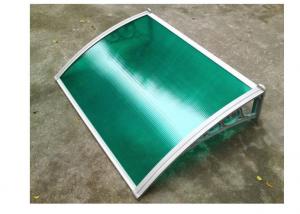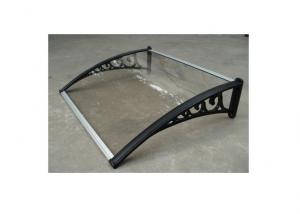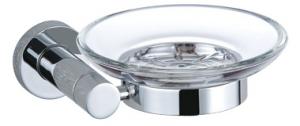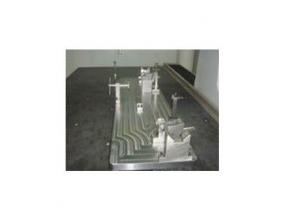Durable blue/silver awning tarpaulin in roll
OKorder Service Pledge
OKorder Financial Service
You Might Also Like
Specifications
Features: Hay Tarpaulin
1)as buyer's request
2) Weight: 70gsm to 300gsm
Details:
1) Fabric quality hay tarpaulin, with U. V. Stabilized Steel pole with Powder Coating.Hay Tarpaulin
2) Size: 5 x 8ft, 10 x 20ft, 12 x 20ft, 18 x 20ft ET
3) Weaving Condition (mesh weft x warp / squint) 3x4, 4x5, 7x7, 7x8, > 8x8, 10x8, 10x10, -12x12, 14x14, 16x16
4) Weight: 70gram / sq. M~ 250gram / sq. M
5) All four edges are
Reinforced by P. P rope in HEM
6) Aluminum eyelet at every 1meter (1yard or 3feet) interval
7) Each piece in a lollygag with your leaflet (or Size sticker)
8) Special treatment: U. Vbrass Eyelet, Plastic Eyelet also available
9) Color: Any color any designs are available as per customers request
10)
Packing: Carton Box packing or Bale packing
Width 2M or 72 inches (183 cm)
Shipment: Within 35 days artery receipt of L/ C or T/ T in advance
Available use: General Cover Covers for Swimming Pools and Garden Furniture etc. Construction and Equipment Cover, Covers for open-stored goods, Covers for trucks / automobiles / boat,
Lining materials for storage tanks and containers, lining material for irrigation Canals and grain silos, Machinery Cover, Tents
- Q: How do olive nets help in reducing the use of chemical pesticides?
- Olive nets help in reducing the use of chemical pesticides by acting as a physical barrier that prevents pests and insects from reaching the olive trees. By covering the trees with nets, farmers can effectively protect the fruits from infestations, reducing the need for chemical pesticides. This method provides a more environmentally friendly approach to pest control, minimizing chemical usage and potential harm to the ecosystem.
- Q: What materials do you use for plastic moulds?
- Can ask. So, many developed countries have formed a wide range of plastic mold steel series. Including carbon structural steel, carburizing type plastic mould steel, pre hardened plastic mould steel, aging hardening plastic mould steel, corrosion resistant plastic die steel, free cutting plastic die steel, hardened plastic die steel, maraging steel and plastic mould steel with mirror polishing.
- Q: Are olive nets suitable for high-density olive plantations?
- Yes, olive nets are suitable for high-density olive plantations. Olive nets provide effective protection against birds and other pests, ensuring a higher yield and better quality olives. They are also easy to install and remove, making them convenient for use in high-density olive plantations.
- Q: How do olive nets prevent olives from being damaged by heavy rain?
- Olive nets prevent olives from being damaged by heavy rain by acting as a protective barrier, covering the olive trees and preventing rainwater from directly hitting the olives. This helps to prevent the olives from becoming waterlogged, which can cause them to split or rot. Additionally, the nets also provide some shelter against strong winds, reducing the risk of branches or entire trees being damaged during storms.
- Q: Are olive nets biodegradable?
- Yes, olive nets are typically biodegradable as they are commonly made from natural materials like jute or biodegradable plastic. However, it is important to check the specific type of olive net being used, as some may be made from non-biodegradable materials.
- Q: Are there any specific techniques for maintaining soil fertility when using olive nets?
- Yes, there are specific techniques for maintaining soil fertility when using olive nets. One effective technique is to regularly monitor and adjust the irrigation schedule to ensure that the soil receives adequate moisture without becoming waterlogged. Additionally, using organic fertilizers or compost can help replenish nutrients in the soil. It is also important to remove fallen leaves and debris from the nets to prevent them from decomposing on the soil surface and depleting its nutrients. Finally, rotating the location of the nets each year can help minimize soil compaction and promote healthy soil structure and fertility.
- Q: How do you secure an olive net to the ground?
- To secure an olive net to the ground, you can use various methods such as using ground stakes or pegs, tying the net to heavy objects like rocks or bricks, or burying the edges of the net in the soil. These methods help ensure that the olive net remains taut and secure, preventing any unwanted movement or access to the olives.
- Q: How does an olive net affect the overall biodiversity in the olive grove?
- An olive net can have both positive and negative impacts on the overall biodiversity in an olive grove. On one hand, it can help protect the olives from being eaten by birds, reducing crop loss and ensuring a higher yield. This can indirectly benefit biodiversity by promoting the economic sustainability of the grove and providing habitat for other species. However, the use of olive nets can also have negative consequences for biodiversity. The nets can act as physical barriers, preventing birds and insects from accessing the trees and their fruits. This can disrupt the natural pollination process and reduce the availability of food sources for wildlife, potentially impacting the populations of certain species. Therefore, while olive nets can provide short-term benefits for olive production, their use should be carefully managed to minimize any negative impacts on the overall biodiversity of the grove.
- Q: Can olive nets be used to reduce water stress?
- Yes, olive nets can be used to reduce water stress. Olive trees require regular irrigation to maintain optimum growth and yield. By placing olive nets over the trees, evaporation from the soil surface can be reduced, thus minimizing water loss. This helps to conserve water and decrease water stress on the olive trees, ensuring they receive adequate moisture for their growth and productivity.
- Q: How do olive nets impact the environment?
- Olive nets can have both positive and negative impacts on the environment. On one hand, these nets are used to prevent olives from falling onto the ground, reducing waste and increasing harvest efficiency. They also protect the olives from pests and predators, reducing the need for chemical pesticides. However, olive nets can also have negative effects on the environment. The nets may obstruct sunlight, affecting the growth and photosynthesis of other plants beneath them. Additionally, if not properly managed, these nets can become entangled with wildlife, potentially leading to injury or death. Overall, the environmental impact of olive nets depends on their usage and management practices. Proper monitoring, maintenance, and responsible disposal are necessary to mitigate any potential harm and ensure a sustainable olive production system.
Send your message to us
Durable blue/silver awning tarpaulin in roll
OKorder Service Pledge
OKorder Financial Service
Similar products
Hot products
Hot Searches
Related keywords
